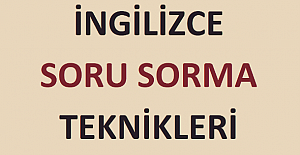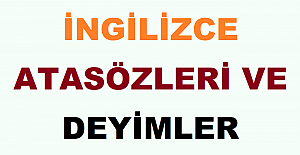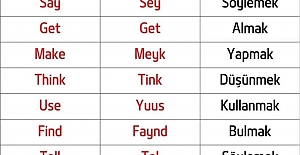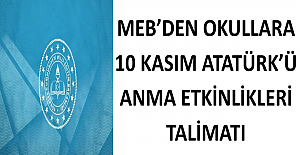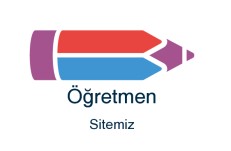Öğretmen haberleri ve gelişmelerden hemen haberdar olmak için Telegram kanalımıza katılın!
His mother's name was Zübeyde Hanim. For his primary education, he went to the school of Semsi Efendi in Salonika. But Mustafa lost his father at an early age, he had to leave school. Mustafa and his mother went to live with his uncle in the countryside. His mother brought him up. Life continued like this for a time. Mustafa worked on the farm but his mother began to worry about his lack of schooling. It was finally decided that he should live with his mother's sister in Salonika.

He entered the Military Middle School in Salonika. In 1895, after finishing the Military Middle School, Mustafa Kemal entered the Military High School (Askeri Idadisi) in Manastir.
After successfully completing his studies at the Manastir Military School, Mustafa Kemal went to Istanbul and on the 13th of March 1899 he entered the infantry class of the Military Academy (Harbiye Harp Okulu). After finishing the Military Academy, Mustafa Kemal went on to the General Staff College in 1902. He was graduated from the Academy with the rank of captain on the 11th of January, 1905.
In 1906, he was sent to Damascus (Sam). Mustafa Kemal and his friends founded a society which they called "Vatan ve Hürriyet" (Fatherland and Freedom) in Damascus. On his own initiative, he went to Tripoli during the war with Italy in 1911 and took part in the defense of Derne and Tobruk. While he was still in Libya, the Balkan War broke out. He served in the Balkan War as a successful Commander (1912-1914). At the end of the Balkan War, Mustafa Kemal was appointed military attaché in Sofia.
Mustafa Kemal in the ArmyWhen Mustafa Kemal was in Sofia, the First World War broke out. He was made Commander of the Anafartalar Group on 8th of August, 1915. In the First World War he was in command of the Turkish forces at Anafartalar at a critical moment. This was when the Allied landings in the Dardanelles (Canakkale Strait) took place and he personally saved the situation in Gallipoli. During the battle, Mustafa Kemal was hit by shrapnel above the heart, but a watch in his breast pocket saved his life. Mustafa Kemal explained his state of mind as he accepted this great responsibility: "Indeed, it was not easy to shoulder such responsibility, but as I had decided not to live to see my country's destruction, I accepted it proudly". He then served in the Caucasus and in Syria and just before the armistice in 1918 he was placed in command of the Lightning Army group in Syria. After the armistice (peace agreement), he returned to Istanbul.
After the Armistice of Montreux, the countries that had signed the agreement did not consider it necessary to abide by its terms. Under various pretexts the navies and the armies of the Entente (France, Britain and Italy) were in Istanbul, while the province of Adana had been occupied by the French, and Urfa and Maras by the British. There were Italian soldiers in Antalya and Konya, and British soldiers in Merzifon and Samsun. There were foreign officers, officials and agents almost everywhere in the country.
On the 15th of May 1919 the Greek Army landed in Izmir with the agreement of the Entente. Under difficult conditions, Mustafa Kemal decided to go to Anatolia. On 16th of May 1919, he left Istanbul in a small boat called the "Bandirma". Mustafa Kemal was warned that his enemies had planned to sink his ship on the way out, but he was not afraid and on Monday19th May 1919, he arrived in Samsun and set foot on Anatolian soil. That date marks the beginning of the Turkish War of Independence. It is also the date that Mustafa Kemal later chose as his own birthday. A wave of national resistance arose in Anatolia. A movement had already begun in Erzurum in the east and Mustafa Kemal quickly placed himself at the head of the whole organization. The congresses in Erzurum and Sivas in the Summer of 1919 declared the national aims by a national pact.
When the foreign armies occupied Istanbul, on 23rd of April 1920 Mustafa Kemal opened the Turkish Grand National Assembly and hence established a provisional new government, the centre of which was to be Ankara. On the same day Mustafa Kemal was elected President of the Grand National Assembly. The Greeks, profiting by the rebellion of Cerkez Ethem and acting in collaboration with him, started to advance towards Bursa and Eskisehir. On the 10th of January 1921, the enemy forces were heavily defeated by the Commander of the Western Front, colonel Ismet and his troops. On the 10th of July 1921, the Greeks launched a frontal attack with five divisions on Sakarya. After the great battle of Sakarya, which continued without interruption from the 23rd of August to the 13th of September, the Greek Army was defeated and had to retreat. After the battle, the Grand National Assembly gave Mustafa Kemal the titles of Ghazi and Marshal. Mustafa Kemal decided to drive the enemies out of his country and he gave the order that the attack should be launched on the morning of the 26th of August 1922. The bulk of the enemy forces were surrounded and killed or captured on the 30th of August at Dumlupinar.
The enemy Commander-in-Chief, General Trikupis, was captured. Or the 9th of September 1922 the fleeing enemy forces were driven into the sea near Izmir. The Turkish forces, under the extraordinary military skills of Kemal Atatürk, fought a War of Independence against the occupying Allied powers and won victories on every front all over the country.
Atatürk inspecting the NavyOn the 24th of July 1923, with the signing of the Treaty of Lausanne, the independence of the new Turkish State was recognized by all countries. Mustafa Kemal built up a new, sturdy, vigorous state. On the 29th of October 1923, he declared the new Turkish Republic. Following the declaration of the Republic he started to his radical reforms to modernize the country. Mustafa Kemal was elected the first President of the Republic of Turkey.
Atatürk made frequent tours of the country. While visiting Gemlik and Bursa, Atatürk caught a chill. He returned to Istanbul to be treated and to rest, but, unfortunately Atatürk was seriously ill. He spent his last days of life on the presidential yacht of Savarona. At 9.05 AM on the 10th of November 1938, Atatürk died, but he attained immortality in the eyes of his people. Since the moment of his death, his beloved name and memory have been engraved on the hearts of his people. As a commander he had been the victorious of many battles, as a leader he had influenced the masses, as a statesman he had led a successful administration, and as a revolutionary he had striven to alter the social, cultural, economic, political and legal structure of society at its roots. He was one of the most eminent personalities in the history of the world, history will count him among the most glorious sons of the Turkish nation and one of the greatest leaders of mankind.
TÜRKÇESİ
TÜRKİYE CUMHURİYETİ'NİN KURUCUSU VE İLK CUMHURBAŞKANI ATATÜRK
Mustafa Kemal Atatürk 1881 yılında Selânik'te Kocakasım Mahallesi, Islâhhâne Caddesi'ndeki üç katlı pembe evde doğdu. Babası Ali Rıza Efendi, annesi Zübeyde Hanım'dır. Baba tarafından dedesi Hafız Ahmet Efendi XIV-XV. yüzyıllarda Konya ve Aydın'dan Makedonya'ya yerleştirilmiş Kocacık Yörüklerindendir. Annesi Zübeyde Hanım ise Selânik yakınlarındaki Langaza kasabasına yerleşmiş eski bir Türk ailesinin kızıdır. Milis subaylığı, evkaf katipliği ve kereste ticareti yapan Ali Rıza Efendi, 1871 yılında Zübeyde Hanım'la evlendi. Atatürk'ün beş kardeşinden dördü küçük yaşlarda öldü, sadece Makbule (Atadan) 1956 yılına değin yaşadı.
Küçük Mustafa öğrenim çağına gelince Hafız Mehmet Efendi'nin mahalle mektebinde öğrenime başladı, sonra babasının isteğiyle Şemsi Efendi Mektebi'ne geçti. Bu sırada babasını kaybetti (1888). Bir süre Rapla Çiftliği'nde dayısının yanında kaldıktan sonra Selânik'e dönüp okulunu bitirdi. Selânik Mülkiye Rüştiyesi'ne kaydoldu. Kısa bir süre sonra 1893 yılında Askeri Rüştiye'ye girdi. Bu okulda Matematik öğretmeni Mustafa Bey adına "Kemal" i ilave etti. 1896-1899 yıllarında Manastır Askeri İdâdi'sini bitirip, İstanbul'da Harp Okulunda öğrenime başladı. 1902 yılında teğmen rütbesiyle mezun oldu., Harp Akademisi'ne devam etti. 11 Ocak 1905'te yüzbaşı rütbesiyle Akademi'yi tamamladı. 1905-1907 yılları arasında Şam'da 5. Ordu emrinde görev yaptı. 1907'de Kolağası (Kıdemli Yüzbaşı) oldu. Manastır'a III. Ordu'ya atandı. 19 Nisan 1909'da İstanbul'a giren Hareket Ordusu'nda Kurmay Başkanı olarak görev aldı. 1910 yılında Fransa'ya gönderildi. Picardie Manevraları'na katıldı. 1911 yılında İstanbul'da Genel Kurmay Başkanlığı emrinde çalışmaya başladı.
1911 yılında İtalyanların Trablusgarp'a hücumu ile başlayan savaşta, Mustafa Kemal bir grup arkadaşıyla birlikte Tobruk ve Derne bölgesinde görev aldı. 22 Aralık 1911'de İtalyanlara karşı Tobruk Savaşını kazandı. 6 Mart 1912'de Derne Komutanlığına getirildi.
Ekim 1912'de Balkan Savaşı başlayınca Mustafa Kemal Gelibolu ve Bolayır'daki birliklerle savaşa katıldı. Dimetoka ve Edirne'nin geri alınışında büyük hizmetleri görüldü. 1913 yılında Sofya Ateşemiliterliğine atandı. Bu görevde iken 1914 yılında yarbaylığa yükseldi. Ateşemiliterlik görevi Ocak 1915'te sona erdi. Bu sırada I. Dünya Savaşı başlamış, Osmanlı İmparatorluğu savaşa girmek zorunda kalmıştı. Mustafa Kemal 19. Tümeni kurmak üzere Tekirdağ'da görevlendirildi.
1914 yılında başlayan I. Dünya Savaşı'nda, Mustafa Kemal Çanakkale'de bir kahramanlık destanı yazıp İtilaf Devletlerine "Çanakkale geçilmez! " dedirtti. 18 Mart 1915'te Çanakkale Boğazını geçmeye kalkan İngiliz ve Fransız donanması ağır kayıplar verince Gelibolu Yarımadası'na asker çıkarmaya karar verdiler. 25 Nisan 1915'te Arıburnu'na çıkan düşman kuvvetlerini, Mustafa Kemal'in komuta ettiği 19. Tümen Conkbayırı'nda durdurdu. Mustafa Kemal, bu başarı üzerine albaylığa yükseldi. İngilizler 6-7 Ağustos 1915'te Arıburnu'nda tekrar taarruza geçti. Anafartalar Grubu Komutanı Mustafa Kemal 9-10 Ağustos'ta Anafartalar Zaferini kazandı. Bu zaferi 17 Ağustos'ta Kireçtepe, 21 Ağustos'ta II. Anafartalar zaferleri takip etti. Çanakkale Savaşlarında yaklaşık 253.000 şehit veren Türk ulusu onurunu İtilaf Devletlerine karşı korumasını bilmiştir. Mustafa Kemal'in askerlerine "Ben size taarruzu emretmiyorum, ölmeyi emrediyorum!" emri cephenin kaderini değiştirmiştir.
Mustafa Kemal Çanakkale Savaşları'dan sonra 1916'da Edirne ve Diyarbakır'da görev aldı. 1 Nisan 1916'da tümgeneralliğe yükseldi. Rus kuvvetleriyle savaşarak Muş ve Bitlis'in geri alınmasını sağladı. Şam ve Halep'teki kısa süreli görevlerinden sonra 1917'de İstanbul'a geldi. Velihat Vahidettin Efendi'yle Almanya'ya giderek cephede incelemelerde bulundu. Bu seyehatten sonra hastalandı. Viyana ve Karisbad'a giderek tedavi oldu. 15 Ağustos 1918'de Halep'e 7. Ordu Komutanı olarak döndü. Bu cephede İngiliz kuvvetlerine karşı başarılı savunma savaşları yaptı. Mondros Mütarekesi'nin imzalanmasından bir gün sonra, 31 Ekim 1918'de Yıldırım Orduları Grubu Komutanlığına getirildi. Bu ordunun kaldırılması üzerine 13 Kasım 1918'de İstanbul'a gelip Harbiye Nezâreti'nde (Bakanlığında) göreve başladı.
Mondros Mütarekesi'nden sonra İtilaf Devletleri'nin Osmanlı ordularını işgale başlamaları üzerine; Mustafa Kemal 9. Ordu Müfettişi olarak 19 Mayıs 1919'da Samsun'a çıktı. 22 Haziran 1919'da Amasya'da yayımladığı genelgeyle "Milletin istiklâlini yine milletin azim ve kararının kurtaracağını " ilan edip Sivas Kongresi'ni toplantıya çağırdı. 23 Temmuz - 7 Ağustos 1919 tarihleri arasında Erzurum, 4 - 11 Eylül 1919 tarihleri arasında da Sivas Kongresi'ni toplayarak vatanın kurtuluşu için izlenecek yolun belirlenmesini sağladı. 27 Aralık 1919'da Ankara'da heyecanla karşılandı. 23 Nisan 1920'de Türkiye Büyük Millet Meclisi'nin açılmasıyla Türkiye Cumhuriyeti'nin kurulması yolunda önemli bir adım atılmış oldu. Meclis ve Hükümet Başkanlığına Mustafa Kemal seçildi Türkiye Büyük Millet Meclisi, Kurtuluş Savaşı'nın başarıyla sonuçlanması için gerekli yasaları kabul edip uygulamaya başladı.
Türk Kurtuluş Savaşı 15 Mayıs 1919'da Yunanlıların İzmir'I işgali sırasında düşmana ilk kurşunun atılmasıyla başladı. 10 Ağustos 1920 tarihinde Sevr Antlaşması'nı imzalayarak aralarında Osmanlı İmparatorluğu'nu paylaşan I. Dünya Savaşı'nın galip devletlerine karşı önce Kuvâ-yi Milliye adı verilen milis kuvvetleriyle savaşıldı. Türkiye Büyük Millet Meclisi düzenli orduyu kurdu, Kuvâ-yi Milliye - ordu bütünleşmesini sağlayarak savaşı zaferle sonuçlandırdı.
Mustafa Kemal yönetimindeki Türk Kurtuluş Savaşının önemli aşamaları şunlardır:
Sarıkamış (20 Eylül 1920), Kars (30 Ekim 1920) ve Gümrü'nün (7 Kasım 1920) kurtarılışı.
Çukurova, Gazi Antep, Kahraman Maraş Şanlı Urfa savunmaları (1919- 1921)
I. İnönü Zaferi (6 -10 Ocak 1921)
II. İnönü Zaferi (23 Mart-1 Nisan 1921)
Sakarya Zaferi (23 Ağustos-13 Eylül 1921)
Büyük Taarruz, Başkomutan Meydan Muhaberesi ve Büyük Zafer (26 Ağustos 9 Eylül 1922)
Sakarya Zaferinden sonra 19 Eylül 1921'de Türkiye Büyük Millet Meclisi Mustafa Kemal'e Mareşal rütbesi ve Gazi unvanını verdi. Kurtuluş Savaşı, 24 Temmuz 1923'te imzalanan Lozan Antlaşması'yla sonuçlandı. Böylece Sevr Antlaşması'yla paramparça edilen, Türklere 5-6 il büyüklüğünde vatan bırakılan Türkiye toprakları üzerinde ulusal birliğe dayalı yeni Türk devletinin kurulması için hiçbir engel kalmadı.
23 Nisan 1920'de Ankara'da TBMM'nin açılmasıyla Türkiye Cumhuriyeti'nin kuruluşu müjdelenmiştir. Meclisin Türk Kurtuluş Savaşı'nı başarıyla yönetmesi, yeni Türk devletinin kuruluşunu hızlandırdı. 1 Kasım 1922'de hilâfet ve saltanat birbirinden ayrıldı, saltanat kaldırıldı. Böylece Osmanlı İmparatorluğu'yla yönetim bağları koparıldı. 13 Ekim 1923'te Cumhuriyet idaresi kabul edildi, Atatürk oybirliğiyle ilk cumhurbaşkanı seçildi. 30 Ekim 1923 günü İsmet İnönü tarafından Cumhuriyet'in ilk hükümeti kuruldu. Türkiye Cumhuriyeti, "Egemenlik kayıtsız şartsız milletindir" ve "Yurtta barış cihanda barış" temelleri üzerinde yükselmeye başladı.
Atatürk Türkiye'yi "Çağdaş uygarlık düzeyine çıkarmak" amacıyla bir dizi devrim yaptı. Bu devrimleri beş başlık altında toplayabiliriz:
1. Siyasal Devrimler:
· Saltanatın Kaldırılması (1 Kasım 1922)
· Cumhuriyetin İlanı (29 Ekim 1923)
· Halifeliğin Kaldırılması (3 Mart 1924)
2. Toplumsal Devrimler:
· Kadınlara erkeklerle eşit haklar verilmesi (1926-1934)
· Şapka ve kıyafet devrimi (25 Kasım 1925)
· Tekke zâviye ve türbelerin kapatılması (30 Kasım 1925)
· Soyadı kanunu ( 21 Haziran 1934)
· Lâkap ve unvanların kaldırılması (26 Kasım 1934)
· Uluslararası saat, takvim ve uzunluk ölçülerin kabulü (1925-1931)
3. Hukuk Devrimi:
· Mecellenin kaldırılması (1924-1937)
· Türk Medeni Kanunu ve diğer kanunların çıkarılarak laik hukuk düzenine geçilmesi (1924-1937)
4. Eğitim ve Kültür Alanındaki Devrimler:
· Öğretimin birleştirilmesi (3 Mart 1924)
· Yeni Türk harflerinin kabulü (1 Kasım 1928)
· Türk Dil ve Tarih Kurumlarının kurulması (1931-1932)
· Üniversite öğreniminin düzenlenmesi (31 Mayıs 1933)
· Güzel sanatlarda yenilikler
5. Ekonomi Alanında Devrimler:
· Aşârın kaldırılması
· Çiftçinin özendirilmesi
· Örnek çiftliklerin kurulması
· Sanayiyi Teşvik Kanunu'nun çıkarılarak sanayi kuruluşlarının kurulması
· I. ve II. Kalkınma Planları'nın (1933-1937) uygulamaya konulması, yurdun yeni yollarla donatılması
Soyadı Kanunu gereğince, 24 Kasım 1934'de TBMM'nce Mustafa Kemal'e "Atatürk" soyadı verildi.
Atatürk, 24 Nisan 1920 ve 13 Ağustos 1923 tarihlerinde TBMM Başkanlığına seçildi. Bu başkanlık görevi, Devlet-Hükümet Başkanlığı düzeyindeydi. 29 Ekim 1923 yılında Cumhuriyet ilan edildi ve Atatürk ilk cumhurbaşkanı seçildi. Anayasa gereğince dört yılda bir cumhurbaşkanlığı seçimleri yenilendi. 1927,1931, 1935 yıllarında TBMM Atatürk'ü yeniden cumhurbaşkanlığına seçti.
Atatürk sık sık yurt gezilerine çıkarak devlet çalışmalarını yerinde denetledi. İlgililere aksayan yönlerle ilgili emirler verdi. Cumhurbaşkanı sıfatıyla Türkiye'yi ziyaret eden yabancı ülke devlet başkanlarını, başbakanlarını, bakanlarını komutanlarını ağırladı.
15-20 Ekim 1927 tarihinde Kurtuluş Savaşı'nı ve Cumhuriyet'in kuruluşunu anlatan büyük nutkunu, 29 Ekim 1933 tarihinde de 10. Yıl Nutku'nu okudu.
Atatürk özel yaşamında sadelik içinde yaşadı. 29 Ocak 1923'de Latife Hanımla evlendi. Birçok yurt gezisine birlikte çıktılar. Bu evlilik 5 Ağustos 1925 tarihine dek sürdü. Çocukları çok seven Atatürk Afet (İnan), Sabiha (Gökçen), Fikriye, Ülkü, Nebile, Rukiye, Zehra adlı kızları ve Mustafa adlı çobanı manevi evlat edindi. Abdurrahim ve İhsan adlı çocukları himayesine aldı. Yaşayanlarına iyi bir gelecek hazırladı.
1937 yılında çiftliklerini hazineye, bir kısım taşınmazlarını da Ankara ve Bursa Belediyelerine bağışladı. Mirasından kızkardeşine, manevi evlatlarına, Türk Dil ve Tarih Kurumlarına pay ayırdı. Kitap okumayı, müzik dinlemeyi, dans etmeyi, ata binmeyi ve yüzmeyi çok severdi. Zeybek oyunlarına, güreşe, Rumeli türkülerine aşırı ilgisi vardı. Tavla ve bilardo oynamaktan büyük keyif alırdı. Sakarya adlı atıyla, köpeği Fox'a çok değer verirdi. Zengin bir kitaplık oluşturmuştu. Akşam yemeklerine devlet ve bilim adamlarını, sanatçıları davet eder, ülkenin sorunlarını tartışırdı. Temiz ve düzenli giyinmeye özen gösterirdi. Doğayı çok severdi. Sık sık Atatürk Orman Çiftliği'ne gider, çalışmalara bizzat katılırdı.
Fransızca ve Almanca biliyordu. 10 Kasım 1938 saat 9.05'te yakalandığı siroz hastalığından kurtulamayarak İstanbul'da Dolmabahçe Sarayı'nda hayata gözlerini yumdu. Cenazesi 21 Kasım 1938 günü törenle geçici istirahatgâhı olan Ankara Etnografya Müzesi'nde toprağa verildi. Anıtkabir yapıldıktan sonra nâşı görkemli bir törenle 10 Kasım 1953 günü ebedi istirahatgâhına gömüldü.
İNGİLİZCESİ
THE FOUNDER OF THE REPUBLIC OF TURKEY AND THE FIRST PRESIDENT ATATÜRK
Mustafa Kemal Atatürk was born in 1881 in Selanka a three-storey pink house in Kocakasım Quarter, Islâhhâne Street. His father is Ali Riza Efendi and his mother is Zübeyde Hanim. Hafiz Ahmet Efendi dedicates by the father XIV-XV. Kocacık Yörüklerindi placed in Macedonia from Konya and Aydin centuries. Ms. Annu Zubeyde is the daughter of a former Turkish family who settled in the town of Langaza near Salonika. Ali Riza Efendi, who served as a militia officer, an evkaf cleric and lumber trader, married Zübeyde Hanim in 1871. Four of Atatürk's five siblings died at an early age, only Makbule (Atatürk) lived until 1956.
When the age of small Mustafa learning came, learning started in Hafez Mehmet Efendi's neighborhood municipality, then at the request of his father Şemsi Efendi Mektebi. Meanwhile, he lost his father (1888). After staying with his uncle at Rapla Farm for a while, he returned to Salonika and finished school. Selannik registered for the Rüstiyesi. Shortly thereafter he entered the Military High School in 1893. In this school, Mathematics teacher added "Kemal" in the name of Mustafa Bey. In 1896-1899, he completed the Military Admission of the Monastery and began studying at the Military Academy in Istanbul. In 1902 he graduated with the rank of lieutenant, continued to the War Academy. On January 11, 1905, he completed the Academy with the rank of captain. From 1905 to 1907 he served at the command of the 5th Army in Damascus. In 1907, he became a Captain (Senior Captain). Monastery III. He was appointed to the army. On April 19, 1909, he served as Chief of Staff in the Movement Army, which entered Istanbul. It was sent to France in 1910. She joined the Picardie Maneuvers. In 1911 he started to work under the command of the General Staff in Istanbul.
Mustafa Kemal took part in the Tobruk and Derne region with a group of friends in the battle that started with the attack of Italians in Tripoli in 1911. On December 22, 1911, he won the Tobruk War against the Italians. On March 6, 1912, he was brought to the Commander of the Association.
When the Balkan War broke out in October 1912, Mustafa Kemal joined the battle with Gallipoli and Bolayir. Dimetoka and Edirne's great service was seen back. In 1913 he was appointed to Sofia. In 1914, when he was in this position, he became a paramilitary. His military task ended in January 1915. In the meantime, the First World War began, the Ottoman Empire had to enter the war. Mustafa Kemal was assigned to Tekirdağ to build a 19th generation.
In World War I, which started in 1914, Mustafa Kemal wrote a heroic legend in Çanakkale and told entente states "Canakkale is inaccessible!" On 18 March 1915 the English and French navy, which crossed the Dardanelles Strait, gave heavy losses and decided to release soldiers to the Gallipoli Peninsula. On April 25, 1915, the 19th Division, commanded by Mustafa Kemal, stopped enemy forces from Arıburnu in Conkbayiri. Mustafa Kemal rose to colonialism on this success. The British attacked again in Arıburnu on August 6-7, 1915. Anafartalar Group Commander Mustafa Kemal won the victory of Anafartalar in August 9-10. This victory on August 17 in Kireçtepe, on August 21 in II. Anafartalar followed the triumphs. The Turkish nation who gave about 253,000 martyrs in the Gallipoli Wars knew about protecting the honor against the Entente States. Mustafa Kemal's soldiers, "I do not command you to attack, I command to die!" The order changed the fate of Cephe.
Mustafa Kemal took part in the Edirne and Diyarbakir in 1916 after the Gallipoli Wars. On April 1, 1916, he became a major general. He fought against the Russian forces and provided Mus and Bitlis back. After his brief duties in Damascus and Aleppo, he arrived in Istanbul in 1917. He went to Germany with Velihat Vahidettin Efendi and was in the fronts. He was sick after this tour. He went to Vienna and Karisbad for treatment. On August 15, 1918 he returned to Aleppo as the 7th Army Commander. He made successful defensive battles against British forces on this front. One day after the signing of the Mondros Armistice, on October 31, 1918, it was brought to the Commander of the Lightning Orders Group. Upon the removal of this army, on November 13, 1918, he came to Istanbul and started to see the religion of Harbiye (in his ministry).
After the Armistice of Mondros, the Entente States began to invade the Ottoman armies; Mustafa Kemal went to Samsun on May 19, 1919 as the 9th Army Inspector. On June 22, 1919, he published a declaration in Amasya that he declared that "the nation will save the independence of the nation once again and determination" and invited the Sivas Congress to the meeting. Between 23 July and 7 August 1919, Erzurum gathered the Sivas Congress between 4 and 11 September 1919, enabling the determination of the way to be followed for the emancipation of the country. He was enthusiastically welcomed in Ankara on 27 December 1919. On 23 April 1920, an important step was taken towards the establishment of the Republic of Turkey with the opening of the Turkish Grand National Assembly. Mustafa Kemal was elected as President of the Parliament and the Government The Turkish Grand National Assembly began to adopt and implement the necessary legislation for the successful conclusion of the War of Independence.
The Turkish War of Independence began on 15 May 1919 when the first shot was thrown at the enemy during the Greek invasion of Izmir. On August 10, 1920, they signed the Treaty of Sevres and fought against the victorious states of the First World War, which shared the Ottoman Empire, with the militia forces called Kuvâ-yi Milliye. The Turkish Grand National Assembly established a regular army, Kuvâ-yi National-army integration ensured the war victory.
The important steps of the Turkish War of Independence under Mustafa Kemal are:
The rescue of Sarıkamış (20 September 1920), Kars (30 October 1920) and Gümrü (7 November 1920).
Cukurova, Gazi Antep, Kahraman Maraş Şanlı Urfa defenses (1919-1921)
I. Inonu Victory (6 - 10 January 1921)
II. Inonu Victory (March 23-April 1, 1921)
Sakarya Victory (August 23-September 13, 1921)
Major Offensive, Commander-in-Chief's Majesty and Great Victory (26 August 9 September 1922)
After the Sakarya Victory, on September 19, 1921, the Grand National Assembly of Turkey gave Mustafa Kemal the rank of Marshal and the title of Gazi. The War of Independence was concluded with the Treaty of Lausanne signed on 24 July 1923. Thus, there were no obstacles for the establishment of a new Turkish state based on national unity on the territory of Turkey, which had been shattered by the Treaty of Sevr and left homeland of 5-6 provinces.
The foundation of the Republic of Turkey was announced with the opening of the Turkish Grand National Assembly in Ankara on 23 April 1920. Successful ruling of the Turkish National Liberation War accelerated the foundation of the new Turkish state. On November 1, 1922, the caliphate and the sultanate were separated and the sultanate was abolished. Thus, the administrative ties with the Ottoman Empire were cut off. On October 13, 1923, the Republican administration was accepted and Atatürk was elected the first president by unanimity. On October 30, 1923, İsmet İnönü established the first government of the Republic. The Republic of Turkey has begun to rise on "the sovereignty unconditionally of the nation" and "peace at home"
Ataturk revolutionized Turkey in order to "bring it to the level of contemporary civilization". We can gather these revolutions under five headings:
1. Political Revolutions:
· Abolition of the Sultanate (1 November 1922)
· Proclamation of the Republic (October 29, 1923)
· Removal of the Halifax (March 3, 1924)
2. Social Revolutions:
· Equal rights for women to men (1926-1934)
· Hats and clothes revolution (25 November 1925)
· Closure of Tekke Zaiviye and Türbeler (November 30, 1925)
· Surname law (21 June 1934)
· Removal of names and titles (November 26, 1934)
· Adoption of international time, calendar and length measures (1925-1931)
3. The Law Revolution:
· Removal of Mecellen (1924-1937)
· Transition to the secular law system by removing the Turkish Civil Code and other laws (1924-1937)
4. Educational and Cultural Revolutions:
· Integration of teaching (March 3, 1924)
· Adoption of new Turkish letters (1 November 1928)
· Establishment of Turkish Language and History Institutions (1931-1932)
· Organization of university education (May 31, 1933)
· Innovations in fine arts
5. Revolutions in the Field of Economy:
· Removal of the case
· Encouragement of the farmer
· Establishment of sample farms
· Establishment of industrial establishments by removing the Industrial Promotion Law
· I. and II. Implementation of the Development Plans (1933-1937), new ways of accommodation
According to the Law of Surname, 24th of November 1934, Mustafa Kemal's "Atatürk" surname was given to the Grand National Assembly of Turkey.
Atatürk was elected as the President of the Turkish Grand National Assembly on 24 April 1920 and 13 August 1923. This presidential role was at the level of the State-Government. October 29, 1923, the Republic was declared and Atatürk was elected the first president. According to the Constitution, the presidential elections were renewed every four years. In 1927, 1931, 1935, the Turkish Grand National Assembly elected Ataturk to the presidency again.
Atatürk frequently visited dormitories and supervised state studies on the spot. He gave orders about directions that were not relevant. He welcomed foreign country heads of state, prime ministers, ministers' commanders who visited Turkey in his capacity as President.
On October 15-20, 1927, he read the great speech of the War of Independence and the foundation of the Republic, and the 10th year of Nutku on October 29, 1933.
Atatürk led a very simple private life. On January 29, 1923, he was married to the Latife Hanım. They went out together with many dormitory visits. This marriage lasted until 5 August 1925. Atatürk Afet (İnan), Sabiha (Gökçen), Fikriye, Ülkü, Nebile, Rukiye, Zehra and the shepherd named Mustafa were adopted spiritually. He took the children Abdurrahim and İhsan to his protection. He prepared a good future for the living.
In 1937, he donated his farms to the treasury and some of his immovables to Ankara and Bursa Municipalities. From his inheritance to his sister, to his spiritual children, to Turkish Language and History Institutions. He loved reading books, listening to music, dancing, riding and swimming. Zeybek games, wrestling, had an extreme interest in the Turkish people of Rumeli. He had great pleasure playing backgammon and billiards. With his horse named Sakarya, the dog gave a lot of value to Fox. He created a rich library. They invited state and scientists, artists, and discussed the problems of the country. He used to wear clean and proper. He loved nature. He often went to the Atatürk Forest Farm and personally attended the workshops.
He knew French and German. On November 10, 1938 at 9.05, he was unable to get rid of his cirrhosis, and his eyes closed in Dolmabahçe Palace in Istanbul. The ceremony was held on 21 November 1938 at the Ankara Ethnography Museum, which is the temporary resting place with ceremonies. After the Anıtkabir was built, he was buried in a magnificent ceremony on November 10, 1953 at his eternal resting place.

 Seçimden Sonra Borsa Ne Olur?
Seçimden Sonra Borsa Ne Olur? Geçmiş Yıllarda Yaşanan Ayı ve Boğa Sezonları
Geçmiş Yıllarda Yaşanan Ayı ve Boğa Sezonları Aevo (AEVO) Token Nedir? Aevo (AEVO) Coin Geleceği
Aevo (AEVO) Token Nedir? Aevo (AEVO) Coin Geleceği Binance Yeni Girecek Coinler 2024. Binance Yeni Listelenecek Coinler 2024
Binance Yeni Girecek Coinler 2024. Binance Yeni Listelenecek Coinler 2024 Eğitim Sendikaları Öğretmenlere Umut Vermiyor!
Eğitim Sendikaları Öğretmenlere Umut Vermiyor!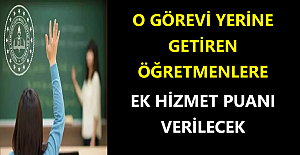 O Görevi Yerine Getiren Öğretmenlere Ek Hizmet Puanı Verilecek
O Görevi Yerine Getiren Öğretmenlere Ek Hizmet Puanı Verilecek MEB, 300 BİN ÖĞRETMEN İÇİN NEYİ, NE ZAMAN PLANLIYOR?
MEB, 300 BİN ÖĞRETMEN İÇİN NEYİ, NE ZAMAN PLANLIYOR?  İl Dışı Tayini Çıkan Öğretmenlerin İlişik Kesme İşlemleri
İl Dışı Tayini Çıkan Öğretmenlerin İlişik Kesme İşlemleri Yeni Eğitim Modelini Cumhurbaşkanı Erdoğan Açıkladı
Yeni Eğitim Modelini Cumhurbaşkanı Erdoğan Açıkladı Ara Tatilde Öğretmenlerin Yapması Gereken Görevler
Ara Tatilde Öğretmenlerin Yapması Gereken Görevler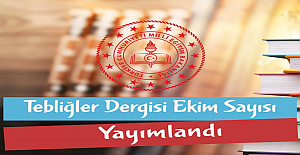 Çok Sayıda Okulun Yeni Haftalık Ders Çizelgeleri Yayımlandı
Çok Sayıda Okulun Yeni Haftalık Ders Çizelgeleri Yayımlandı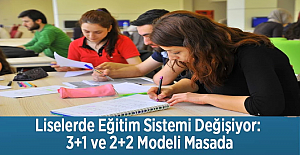 Lise Eğitimi İçin 3+1 Ve 2+2 Sistemi
Lise Eğitimi İçin 3+1 Ve 2+2 Sistemi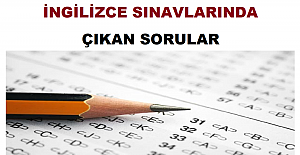 İngilizce Sınavlarında Çıkan Sorular
İngilizce Sınavlarında Çıkan Sorular İngilizce Öğrenmek İçin En İyi Belgeseller
İngilizce Öğrenmek İçin En İyi Belgeseller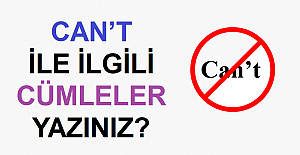 Can’t İle İlgili Cümle Örnekleri
Can’t İle İlgili Cümle Örnekleri ÜCRETSİZ İNGİLİZCE EĞİTİM VEREN SİTELER
ÜCRETSİZ İNGİLİZCE EĞİTİM VEREN SİTELER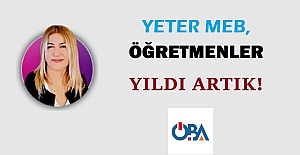 YETER MEB, ÖĞRETMENLER YILDI ARTIK!
YETER MEB, ÖĞRETMENLER YILDI ARTIK! Akran Zorbalığın Öğrenme Güçlüğü Yaşayan Çocukları Daha Çok Etkiliyor
Akran Zorbalığın Öğrenme Güçlüğü Yaşayan Çocukları Daha Çok Etkiliyor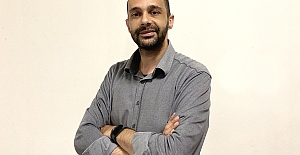 Tercih Döneminde Burs Seçeneklerini Değerlendirin
Tercih Döneminde Burs Seçeneklerini Değerlendirin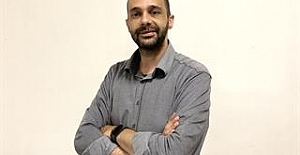 Doğru Tercih İçin 5 Altın Kural
Doğru Tercih İçin 5 Altın Kural 2025 Yılı Uzman Öğretmenlik ve Başöğretmenlik Takvimi
2025 Yılı Uzman Öğretmenlik ve Başöğretmenlik Takvimi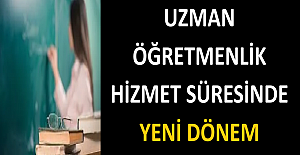 Uzman Öğretmenlik Hizmet Süresinde Yeni Dönem
Uzman Öğretmenlik Hizmet Süresinde Yeni Dönem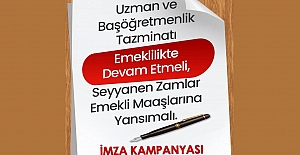 UZMAN VE BAŞÖĞRETMENLİK TAZMİNATI İLE SEYYANEN ZAMLARIN EMEKLİ MAAŞINA YANSIMASI İÇİN İMZA KAMPANYASI BAŞLATILDI
UZMAN VE BAŞÖĞRETMENLİK TAZMİNATI İLE SEYYANEN ZAMLARIN EMEKLİ MAAŞINA YANSIMASI İÇİN İMZA KAMPANYASI BAŞLATILDI Uzman ve Başöğretmenlik Kılavuzu Yayınlanma Tarihi Belli Oldu
Uzman ve Başöğretmenlik Kılavuzu Yayınlanma Tarihi Belli Oldu Backlink Nedir, Nasıl Alınır ve SEO İçin Doğru Backlink Stratejisi Nasıl Kurulur? (Güncel Rehber)
Backlink Nedir, Nasıl Alınır ve SEO İçin Doğru Backlink Stratejisi Nasıl Kurulur? (Güncel Rehber) İstanbul Çiçek
İstanbul Çiçek Edremit İstanbul Uçak Bileti - En Uygun Fiyatlar
Edremit İstanbul Uçak Bileti - En Uygun Fiyatlar Dijital Rekabet Markaların Güvenilirliğini Belirliyor
Dijital Rekabet Markaların Güvenilirliğini Belirliyor




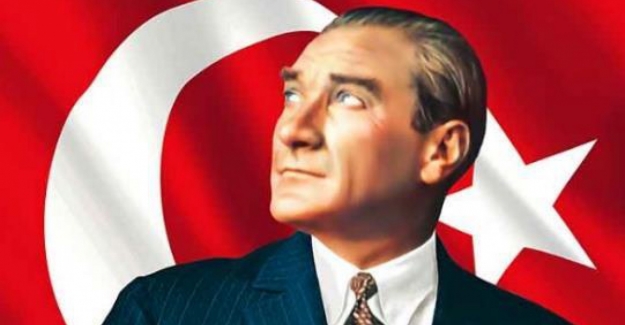
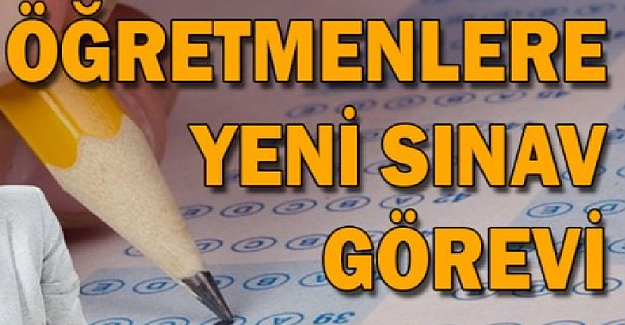
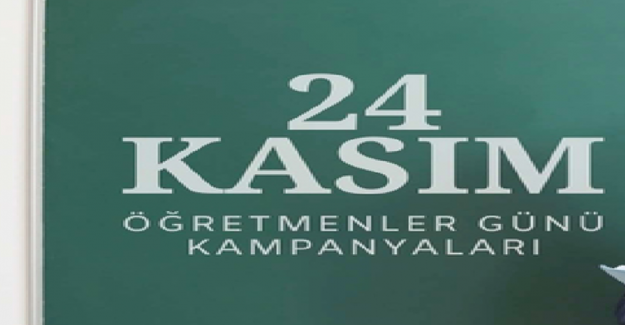
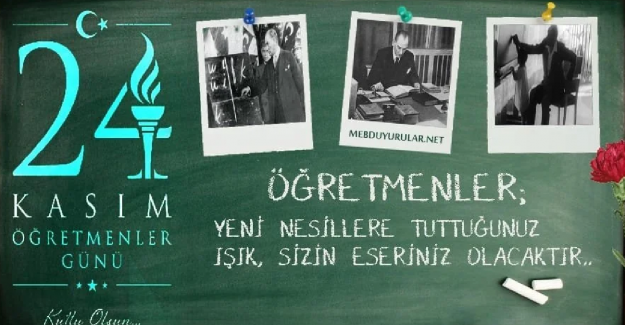

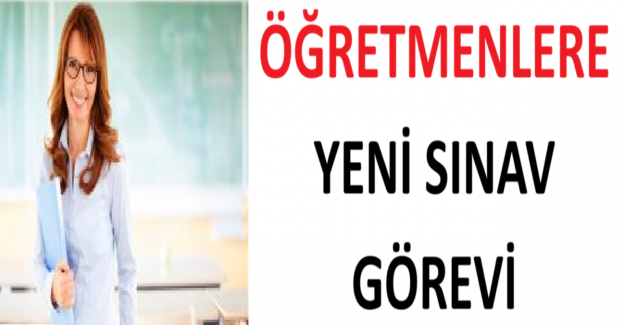
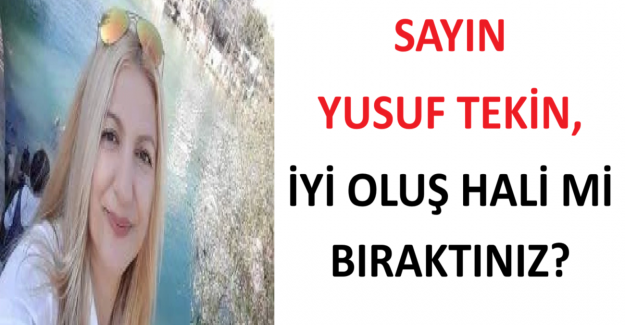


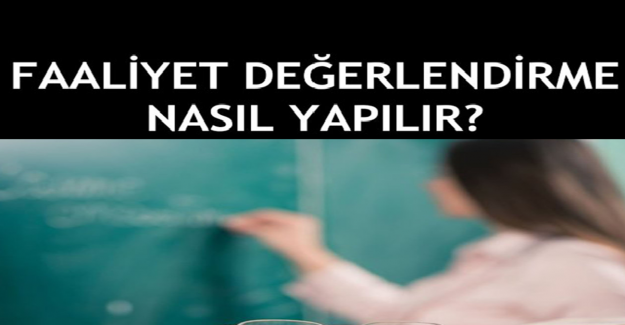
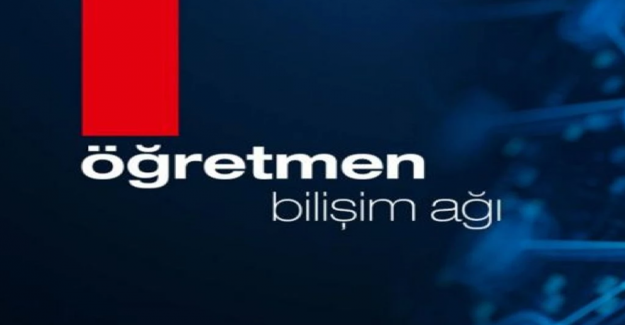
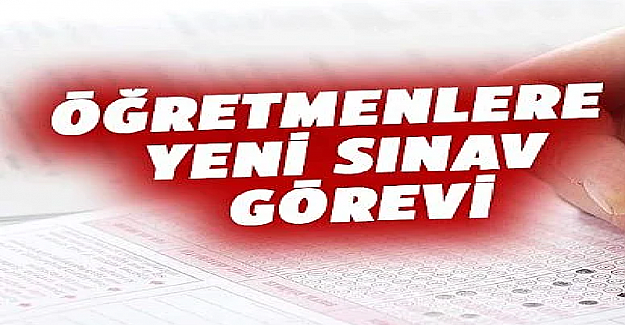

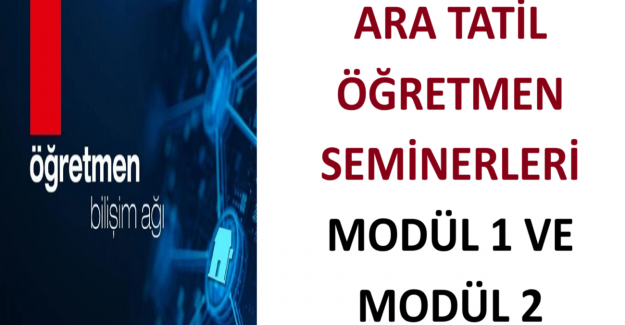
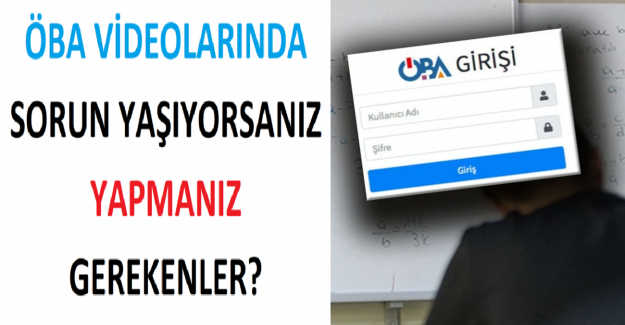
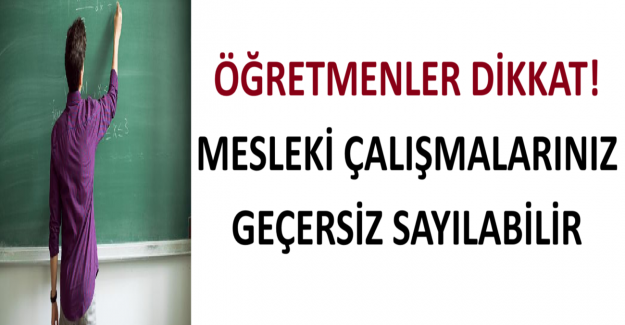



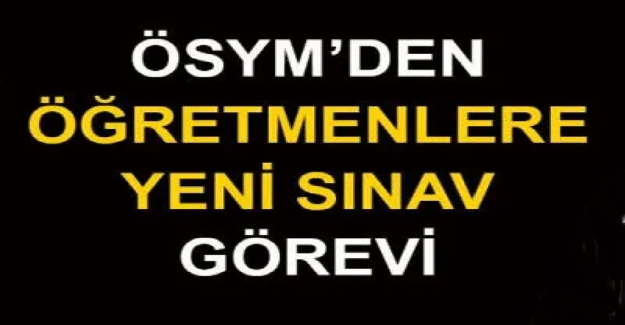

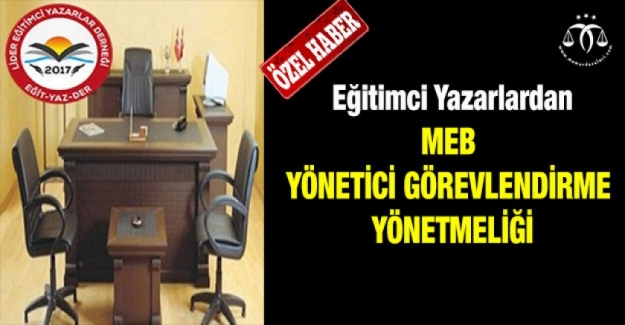
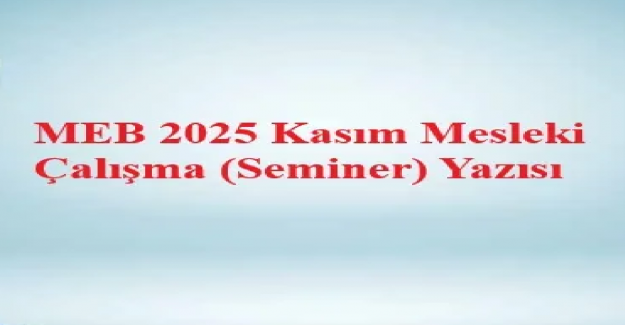

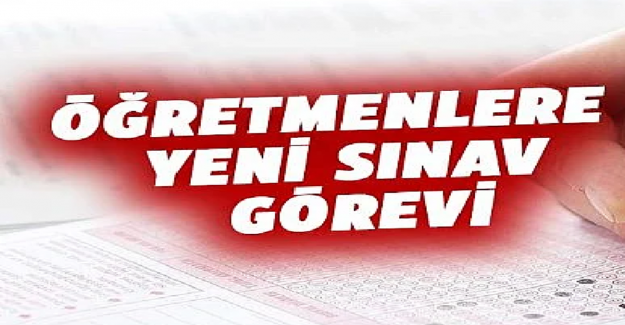
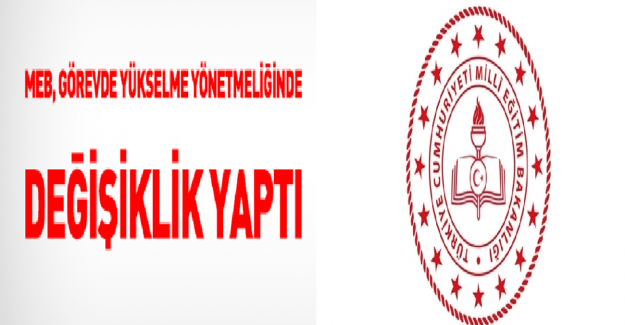
 Beşiktaş Duvar Kağıtları
Beşiktaş Duvar Kağıtları  Resimli, uzun, kısa, ayetli, dualı Cuma mesajları
Resimli, uzun, kısa, ayetli, dualı Cuma mesajları 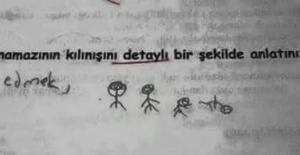 Öğrencilerin Sınav Sorularına Verdikleri Komik Cevaplar
Öğrencilerin Sınav Sorularına Verdikleri Komik Cevaplar 